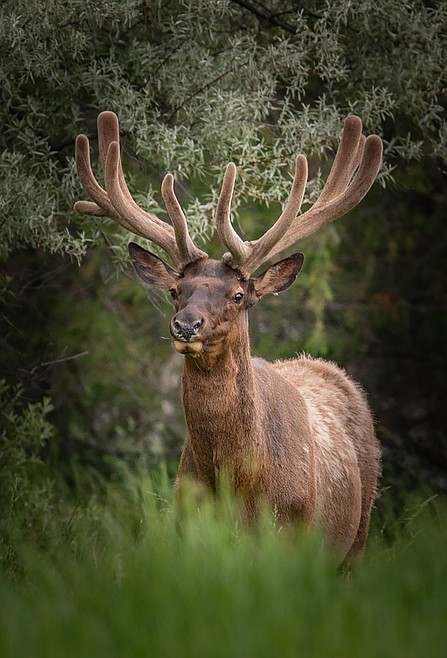Study looks at elk population in Lower Clark Fork
Montana Fish, Wildlife and Parks has its Region 1 headquarters in Kalispell. The region encompasses Northwest Montana and has magnificent resources for recreation that make many areas jealous. Fishing might be the most popular but hunting is a close second if that’s the case.
A large portion of the region is in public ownership with Forest Service and state lands, and millions of acres are open to hunting and other outdoor recreation activities. There are also hundreds of thousands of acres of private land open to hunting and other recreation, including corporate timberland and land enrolled in the Block Management Program.
Region 1 Hunting District 121 is in the southwest area and considered the Lower Clark Fork as it follows the Clark Fork River into Idaho. Montana 200 from Thompson Falls splits HD 121 in half.
15.6% of HD 121 is privately owned and 82.7% is public, meaning there are excellent opportunities to hunt on either side of the river/reservoir.
In 2021, 662 hunters applied for the 150 cow elk permits allotted by FWP giving an almost 25% chance of drawing one, which for meat hunters, are good odds.
This district has been selected for a multi-year project into what is influencing the elk population. State biologists are partnering with researchers at the University of Montana W.A. Franke College of Forestry and Conservation to carry out a comprehensive study of elk populations.
Several factors went into the decision to choose HD 121.
“This area has a healthy elk herd already plus it is much easier to aerial survey than thick mountainous regions like what you have in Mineral County,” explained Dillon Tabish, FWP Region 1 Communications Director. “Plus, it also has the apex predators we want to study as we will be collaring 5 wolves, 10 lions and 10 bears as subjects of study.”
The overall project will focus on the survival, recruitment and pregnancy of elk; the interaction between predator and prey; where and how the elk move during different seasons on both private and public lands; what habitat needs and land use tactics are beneficial to the elk; and overall wildlife management strategies for northwest Montana.
“We are hoping to better understand elk population dynamics in Northwest Montana by studying the top-down influences like predation and the bottom-up influences like habitat,” said Dr. Kelly Proffitt, FWP research lead for this project. “FWP will use this information from the field to develop an adaptive management plan for elk in this region. It will also help FWP and land managers continue to collaborate on forestry practices that benefit wildlife.”
This winter and spring, biologists and researchers will begin capturing elk and their predators. The goal is to catch 60 elk and fit the animals with GPS radio collars to track their movements, help evaluate population numbers, and identify the different causes of elk mortalities. Female elk will also receive implants that detect when and where calves are born so biologists can capture and collar the young animals for tracking survival and mortality rates.
Elk captures will involve helicopters and ground traps starting this winter and continuing through the duration of the project to maintain 60 collared elk.
“And that’s what can stretch this project out, as maintaining 60 elk with collars is challenging,” said Tabish.
Collar maintenance itself is ongoing as the batteries need replacing and some detach unexpectedly.
“These rascals are pretty good at slipping them off if they put their mind to it. Bears, for example, will put on a lot of extra weight just before hibernations and collars have been known to pop off, which they are designed to do rather than strangle the animal,” Tabish shared.
Another part of this project will include studying the effects of timber management on elk habitat and distribution. This will include surveying the types of forage and forested habitats that elk are using throughout the year. 78.8% of HD 121 is forest and woodland which equates to 768.8 square miles.
Research will also try to better understand how hunting pressure drives elk movements on public and private land throughout hunting season. Researchers will learn more about where and how animals are using the landscape with remote triggered cameras which will be distributed throughout the area and collect observations of wildlife for abundance estimates.
To follow the progress of this project, visit fwp.mt.gov/aboutfwp/regions/region1.


